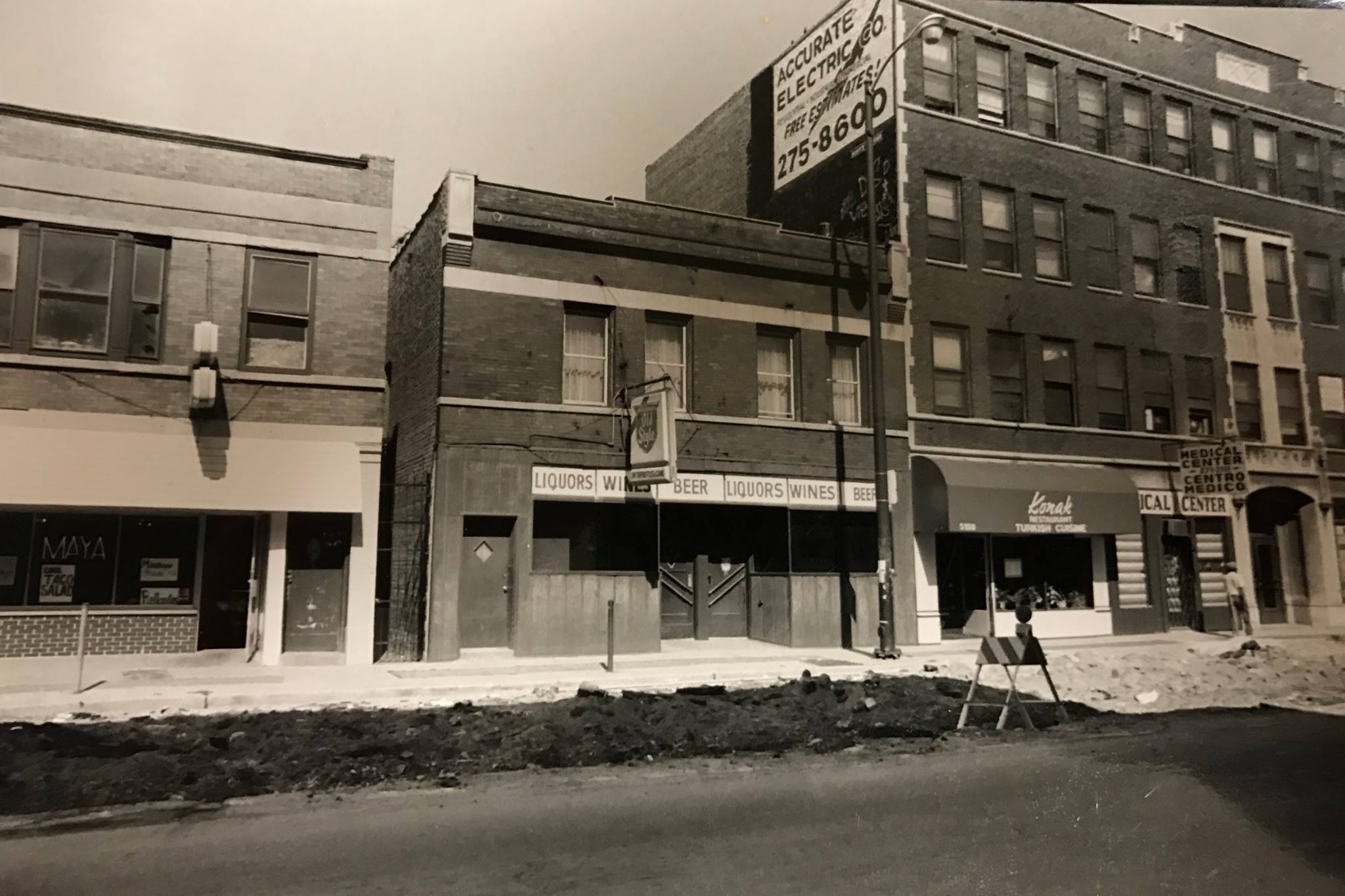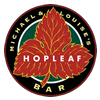
Hopleaf History—Chapter1—Micu Negresti, Clark Foster Liquors
Wednesday, February 15th, 2017 is the 25th anniversary of our takeover of the former Clark Foster Liquors and the beginning of it morphing into Hopleaf. For those who are interested, over the next 12 months, I am going to tell the story, more or less chronologically, of how Hopleaf became Hopleaf. To start, the former Clark Foster Liquors was known mostly as Hans’ because Hans Gotling owned the place for decades. However, between Hans and us, there was an unlikely one year period of ownership by Khalid Sahi, known as Sid. …
In 1990, Hans was ready to sell his liquor store/tap room. In fact, he had sold it twice before, once on a land contract to James McCallister. He quickly failed and Hans took the bar back. Hans then sold the bar to Mary Lou Hunziker who wound up selling the bar back to Hans but keeping the building. As it happened, I saw the ad in the Chicago Tribune for the place and looked at it. While Hans told me that everything about the place was “first class” I was unimpressed. It was small, in bad condition and was not exactly a thriving business. At that moment, I saw no potential there
and passed on it.

The man who did buy it was Kahlid Sahi, a car salesman at a Mercedes Benz dealership in the suburbs. He was an observant Muslim from Pakistan who was looking for business to invest in. His accountant suggested a liquor store. “Sid” Sahi knew nothing about the business. He knew so little, that he did not even seem to recognize what he was buying. While Clark Foster Liquors did sell package goods, it was more of a bar than a store. It was also a bar whose older white ethnic clientele was not likely to bond with a dark-skinned Muslim from Pakistan.
Sid ran the bar for a year and watched the shrinking revenue shrink at an even faster pace. He was not making any money. Besides covering the Swedish fishing village mural Hans’ had painted on the north wall with mirror tiles, he did not have a single idea what would turn the place’s business around. The mirror tiles, needless to say, had no effect.
In the meantime, we had looked at two other potential locations for a future Hopleaf. The first, at 4337 N Lincoln, was then the Amsterdam Jazz Cafe, and before that it was Goodnight Irene’s. It had lots of unappealing complications that drove us away. It became Jury’s for many years and then the short lived Copperhouse. Now it is The Northman.
After that, we made a bigger commitment to a space on Wilson and Wolcott. This was a bar called, appealingly, Micu Negresti. It occupied 2 storefronts just east of Ravenswood Hospital. It had a kitchen. We signed a lease and a purchase agreement contingent on getting a liquor license. We had architectural drawings done. We rooted around the space a bit. About the only positive discovery I made was that there was a tin ceiling above the cigarette-stained drop ceiling.

As it happened, Micu Negresti was unpopular with its nearby neighbors. Its Romanian customers often got into brawls that spilled into the street. This was 1990, only one year after the tumultuous Romanian Revolution, and the passions that drove millions to the streets and led to the killings of Ceaușescu and his wife had spread to a corner bar in Chicago. The neighbors opposition translated to a great deal of skepticism from 47th Ward Alderman Gene Schulter. He nixed our plan. The space became Sabor a Cuba and Caro Mio, neither of who got liquor licenses. The hospital later closed and the business strip has struggled.
We wasted a few months’ rent money and our architectural drawings. I still have them. We dodged a bullet. That location would never have been great for us.
At that very moment, Clark Foster Liquors came back on the market. Sid wanted out. He offered it for what he paid for it. It was the very same place that I found completely unworthy a year earlier. It had nothing going for it. Andersonville was a sleepy area of Chicago that all of the smart people said was too far away from what was happening in town; a no-mans land between Lakeview and Rogers Park. The equipment was worn out. It was ugly. It was small.
What Clark Foster Liquors had was a “clean” license that was owned not by an individual, but by a corporation. It was easily transferable with a simple change of corporate officers. It had 10 years left on a lease that in 1992 asked only $600 a month for rent. The lease allowed a rise in the rent of $50 every 2 years, terms that were very agreeable. Though the bar was small, the building had 3 apartments, a full basement, a yard and a 3 car garage that perhaps someday could be ours if we could convince the owner, Mary Lou Hunziker who lived above the bar, to sell us the building.
Frustrated by several dead ends and having been 10 years since the fire destroyed my first bar venture, the New Miami in Detroit, I was an easy mark. I labored over the decision for several days. I tried to visualize what could be done to make people actually want to come to this out of the way place. In the end, I wanted a bar, any bar, and I wanted it then. On January 24th, 1992, I signed on the dotted line.
Of course, I had to be vetted by the City, the State of Illinois and the FBI to ensure that the public good would not be threatened by one Michael Roper having a license to sell alcoholic beverages. I also had to post a public notice to give neighbors a warning of impending change. That process would take less than 3 weeks.
The customers and staff were not quite clear what was happening, when it would happen, and who might be taking Sid’s place. During the interval between applying for and receiving the license, I surreptitiously visited the bar to get a sense of which employees I could trust and who the customers were. My clandestine visits were depressing. This bar was not in any way a bar that I would want to go to. How could I expect anyone new to come in? Our work was cut out for us.

